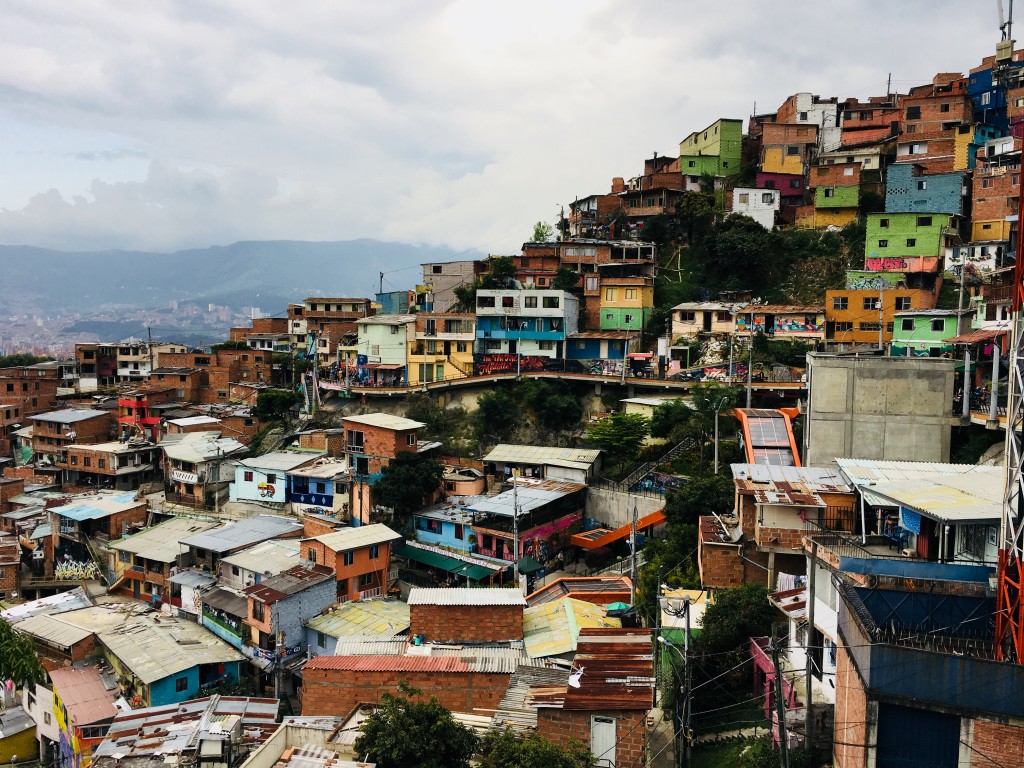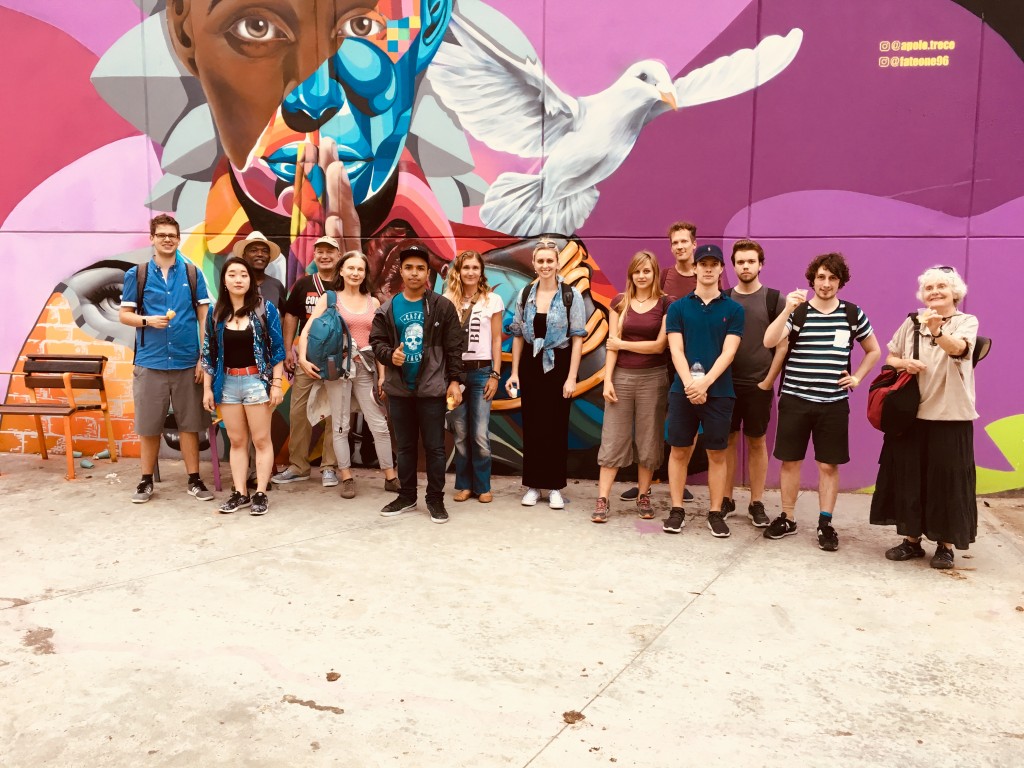Medellin, the second city of the country in terms of population and development, it is also a place where inequalities reign. Between the “Poblado” neighborhood, for example, very well equipped for foreigners and where life is expensive, and the center of Medellín “El Hueco” or “Commune 13” there are significant differences in terms of the wealth of the inhabitants and access to basic needs such as running water, education or public transportation.
The agglomeration of Medellín, (not counting the surrounding peri-urban municipalities) currently has about 2,5 million inhabitants, and is made up of 17 municipalities.
Commune 13 is one of the most affected by violence, precariousness and the armed conflict.
As a small historical reminder, the houses, due to the rural exodus, were built on the side of a mountain on the outskirts of the city of Medellín, and did not have electricity, running water or public services, and were considered "invasive" by the Government.
Comuna 13 was then quickly taken over by guerrillas and drug traffickers due to its strategic, high position, difficult to access and close to both the mountain to hide in and the highway that leads to Turbo for arms and drug trafficking. Therefore, there was a climate of violence and insecurity in the neighborhood with control of the population by criminal gangs.
Under the pretext of war against the guerrillas, the government then created “self-defense groups”, also known as paramilitaries, and organized large-scale military operations beginning in 2001, with little distinction between the civilian population and the guerrilla groups.
The most representative and deadly of these was Operation Orion, which took place between October 16 and 17, 2002, a vast "cleansing" operation organized by the government, and carried out in conjunction with paramilitary groups, which caused 14 dead, 40 wounded and more than 300 missing.
After this operation, the paramilitary groups remained and continue to be present in certain areas, organized as a mafia protection system. In fact, the inhabitants must pay a tax every week to "guarantee their safety".
However, starting in 2005, a social project for the rehabilitation of the municipality finally came to light with the encouragement of artistic creation, scholarships for students and the desire to develop the space to offer a new vision of the district, with in particular the funicular, which connects the city center with Comuna 13 more efficiently, and escalators, which allow the inhabitants of this district to move much more easily. Tourism has also emerged in this context, with tours organized by people from the neighborhood.
It is in this spirit that Comuna 13 is currently home to artists mainly from urban culture, rappers and graffiti artists, who are helping to transform the space and atmosphere of the neighborhood.
Casa Kolacho, for example, is a corporation founded by young people who, tired, decided to tell the story of their neighborhood with an extra dimension to the mere aspect of murder and drugs and promote rap, graffiti and break dance.
For two decades, this place has been a meeting point for artists who offer young people an alternative to crime, with art as their only weapon.
Walking through this neighborhood, it is difficult to imagine the violence that the population suffered just twenty years ago. We especially feel a desire to live and transmit a positive energy by sublimating the past of the district by all possible means; dancing, singing, music, drawing. Comuna 13 is a good example of what can be positive in suffering, and it makes you want to try to have this attitude in your personal life.
This article was originally written in French
By Claire Allievi from France
All the articles in this blog have been written by the teachers of our school and by students from different countries who traveled to Colombia to learn Spanish.
“You travel too and study Spanish in NUEVA LENGUA"
Follow us on our social networks:
RELATED VIDEOS
MEDELLÍN - GUADUAS


